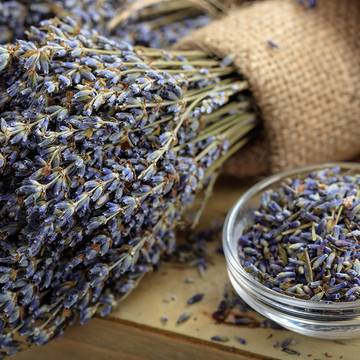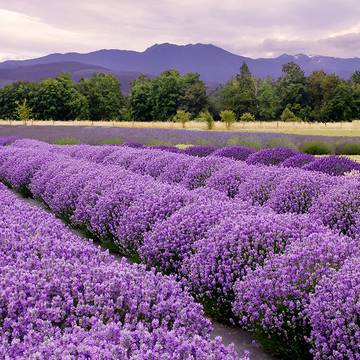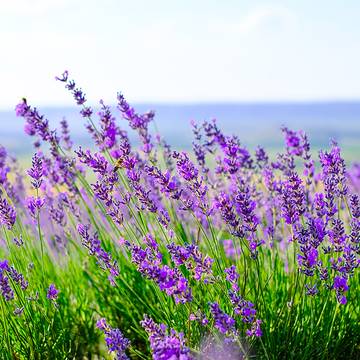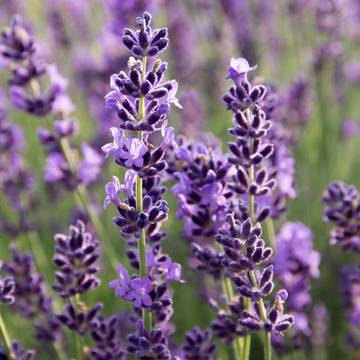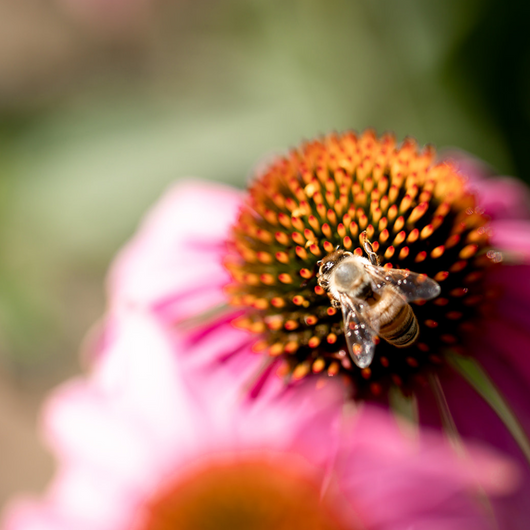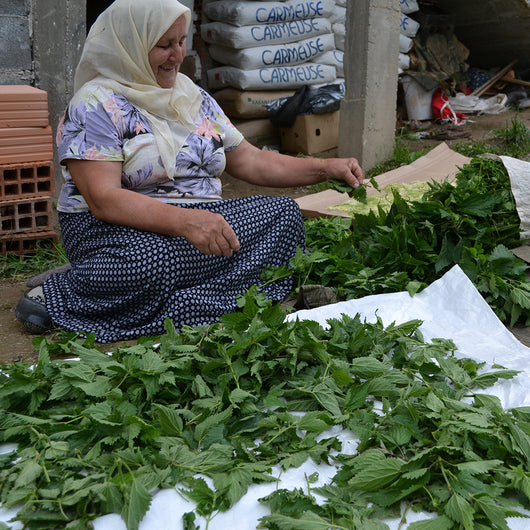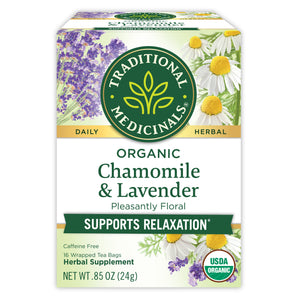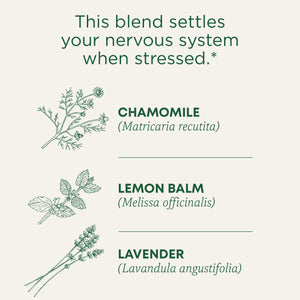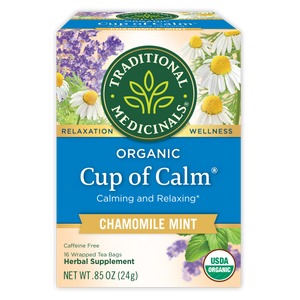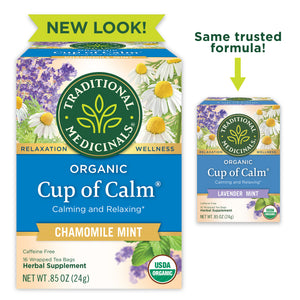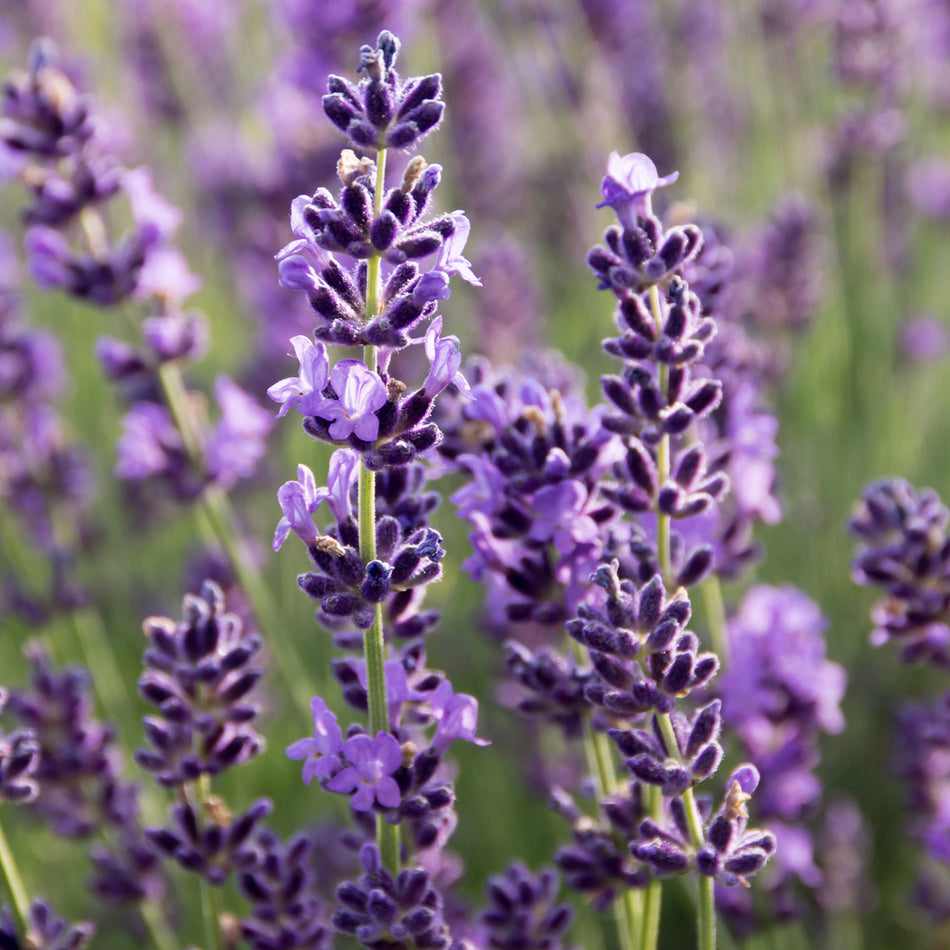
Lavender
Lavandula spp., Lavandula angustifoliaIn addition to its aromatic qualities, lavender has a wide range of medicinal benefits like settling the nervous system, easing occasional stress, and relaxing the digestive system.*
Slip into sweet relaxation with lavender.
What are the Benefits of Lavender?
Lavender uses are vast, ranging from a fragrance in cosmetics, soaps and candles to a flavoring in ice cream, and our favorite, lavender tea for its relaxing herbal benefits.* Of all the parts of the lavender plant, lavender flowers are most noteworthy for their medicinal benefits. They are composed of a variety of botanical constituents such as flavonoids, tannins, essential oils, and coumarins which generate lavender’s signature scent. When infused into boiling water for a soothing cup of lavender tea or extracted into an alcohol-based tincture, it makes for an ideal ally in easing occasional stress and relaxing the digestive system.*
Folklore & Historical Use of Lavender
Historically, cultures around the world have incorporated the lavender plant into their herbal apothecaries for its diverse ability to support different systems of the body.* Lavender’s latin name stems from lavare, or “to wash”— an undeniable link to its early uses. Ancient Greeks, Romans, and Arabs believed in its purifying properties, using it to clean wounds, facilitate healing and to relieve worrying. As global trade expanded, lavender was shared throughout Europe and Asia, where it was used for spiritual rituals and household cleaning, distilled into lavender essential oil for perfume, and applied as an herbal medicine.
The Greeks and Romans also used the herb for its relaxing properties to relieve occasional worrying, stress, and sleeplessness.* During the Middle Ages, the Catholic church strew lavender during holy days to ward off evil spirits, and people would scatter it on floors to keep stuffy rooms smelling fresh. The herb became even more popular during the plague, where it was used in the famous Four Thieves Vinegar to repel fleas. Lavender’s folklore has even spread to the realm of love, where it has been thought to both attract potential suitors and keep the young chaste throughout history.
Botanical Description & Habitat
With 450 named varieties and cultivars of Lavandula spp., it may well be one of the world’s most beloved and widely used herbs. The most common medicinal species is Lavandula angustifolia, which is one of our favorite ingredients in our teas.
The lavender plant hails from the mint family and is a native of the Mediterranean, where it grows well in full sun and stony, well-drained soils. Those who live in dry climates, prize lavender for its tolerance to drought, a real blessing for gardeners in our era of climate change.
This fragrant and adored species sprouts long, branching stems with clusters of purple flowers, which provide the highest concentration of essential oils. The flowers are harvested just before they are fully opened and are used while either fresh or dried.
When To Use Lavender
For gentle, everyday digestive support.
When you’re ready to peacefully wind down your day.
Anytime you need to take the edge off intense moments.
The Business of Sustainable Plants
Our business is rooted in plants, and for us, it’s a business imperative that we care for the ecosystems where these plants live and thrive. We believe that everything is interconnected, which means supporting ecosystems and the farmers and collectors who harvest and gather our herbs. Finding opportunities to reduce or eliminate emissions at the source, we support organic and regenerative farming practices as well as voluntary certifications like Organic and FairWild. These ensure the absence of pesticides, herbicides, as well as the ongoing sustainability of wild collection, and the health and livelihoods of the collectors who forage. Josef Brinckmann, Traditional Medicinals’ Research Fellow, Medicinal Plants and Botanical Supply, asserts, “Everyone has a role to play in preserving biological diversity. One way of doing that is by equitably supporting the local people to serve as stewards of the land.”
It Starts with Organic
We choose to source organic because we believe in the positive impacts it has on environmental sustainability, biodiversity, and overall ecosystem health. Organic helps us increase transparency while prioritizing consumer well-being and farmer success, which is key to producing the high-quality herbs we source. In 2021, we procured 2.73 million pounds of certified organic herbs, over 99.7% of our total botanical herbs purchased. Volumes were down slightly from FY20 due to timing of inventories received.
The impact from organic farming creates a vital ecosystem through improved soil health, water quality, pollinator habitats, and biodiversity. Organic farms also have increased carbon sequestration potential through long-term carbon storage in the soil, helping to mitigate climate change.
One of the benefits of organic that we most value is farmer health. We care deeply about the people who produce our herbs, ensuring that they are not exposed to synthetic chemicals found in conventional agriculture.
Fair Trade
We believe that everyone deserves a fair wage for hard work. That’s one of the reasons why we’re committed to fair trade. Traditional Medicinals® is a registered Fair Trade “brand holder”, “licensee” and “manufacturer,” and our products are certified by Fair Trade USA, an independent third-party certifier. We were an early adopter of Fair Trade, having launched our first fair trade tea product in 1998, just one year after Fairtrade International (FLO) was established. We continue to work closely with our network of producers to help them to implement fair trade standards and get certified.
Chamomile & Lavender Tea
Additional Information
Legal Disclaimer:
The information and other content in this article are designed to provide a general overview of the botany, cultural history, and traditional uses of this herb. It is not intended and should not be construed as health advice. Every person is unique and you should consult with your health care provider before using any herbal product or supplement.

